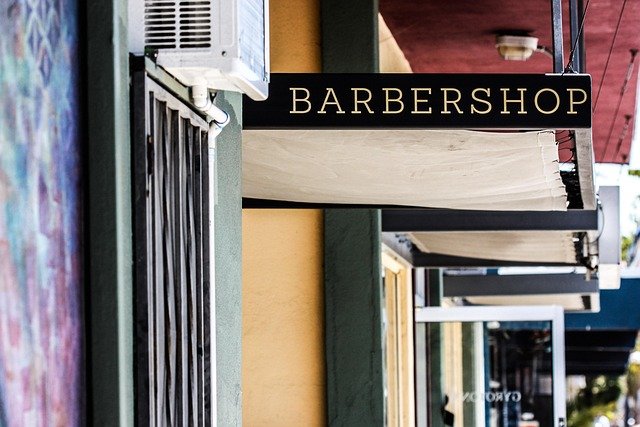Costs to Budget When Leasing a Commercial Storefront
Leasing a commercial storefront involves more than just monthly rent. Costs tied to location, lease structure, local regulations, build-out, and ongoing operations all affect your budget. Understanding typical line items—from zoning permits to signage and customer analytics—helps you estimate cash needs and negotiate sensible lease terms.

Leasing a commercial storefront requires a detailed budget that covers both one-time and recurring expenses. Beyond base rent, tenants should plan for security deposits, tenant improvements, utility setup, permit fees, and operational tools such as point-of-sale systems and customer analytics. Location and foot traffic affect rent and renovation priorities, while zoning and permits determine what modifications are allowed. Early planning avoids surprises and helps align store design with neighborhood expectations.
How does storefront location affect costs and visibility?
Location is one of the largest cost drivers when leasing retail space. High-visibility corners, proximity to transit, and streets with steady foot traffic typically command higher base rent and may include clauses for percentage rent or minimum sales thresholds. The surrounding neighborhood and competitor mix influence customer demographics and merchandising choices. Factor in local signage regulations, sight lines from the street, and parking availability when estimating how location will affect both rent and marketing budgets.
What lease terms and leasing costs should you plan for?
Lease structure dictates which expenses fall to the tenant. Gross leases bundle many expenses into a single rent payment, while net leases pass property taxes, insurance, and common area maintenance (CAM) to the tenant. Expect security deposits, potential guarantees, and broker fees. Pay attention to escalation clauses, options to renew, tenant improvement allowances, and any percentage rent tied to sales. These details change cashflow projections and are central to accurate budgeting.
What zoning rules and permits affect your budget?
Zoning and local codes set allowable uses and can require conditional use permits, variances, or specific safety upgrades. Permit costs include application fees, plan reviews, inspections, and possible mandatory improvements for accessibility, fire suppression, or HVAC upgrades. Hiring an architect or contractor familiar with local codes can reveal hidden costs and timeline impacts; permit delays can create carrying costs if rent or utilities begin before the store opens.
How much to allocate for layout and store design?
Store layout and design turn an empty shell into a functional retail environment and often represent a significant portion of upfront costs. Budget for demolition, flooring, lighting, fixtures, electrical and HVAC work, and design or architect fees. Costs range widely based on finish quality and structural changes. Consider a phased approach that prioritizes essential build-out for opening and schedules aesthetic or secondary upgrades when revenue stabilizes.
What are typical signage and merchandising expenses?
Exterior signage helps draw foot traffic but involves design, fabrication, permitting, and installation costs that vary by material and size. Interior merchandising—shelves, fixtures, display units, window treatments, and point-of-sale fittings—depends on product mix and layout. Visibility investments might include upgraded lighting or storefront glazing. Verify local signage rules and landlord restrictions early to avoid redesigns that increase cost and delay opening.
Ongoing costs, customer analytics, and real-world pricing insights
Recurring expenses include utilities, insurance, maintenance, cleaning, staffing, marketing, and subscriptions for POS and customer analytics platforms. Below is a concise comparison of common providers and typical cost ranges to help frame expectations. Use local quotes to refine estimates and model cashflow conservatively.
| Product/Service | Provider | Cost Estimation |
|---|---|---|
| Commercial property listing (promoted exposure) | LoopNet (CoStar Group) | $150–$500 per month for promoted listings (estimate) |
| Tenant representation / commercial brokerage | CBRE; local brokerages | Commission often 3–6% of lease value or $1,000–$5,000 retainer (estimate) |
| POS and customer analytics software | Square for Retail; Shopify POS | $60–$299 per month depending on plan and add-ons (estimate) |
| Exterior signage production and installation | Local sign fabricators; national print shops | $200–$5,000+ depending on size, materials, and permit needs (estimate) |
| Sign permit and municipal fees | Local municipality | $50–$1,000+ depending on jurisdiction and signage scope (estimate) |
Prices, rates, or cost estimates mentioned in this article are based on the latest available information but may change over time. Independent research is advised before making financial decisions.
When using these estimates, request written quotes and clarify whether fees are one-time or recurring. Broker fee structures, listing promotion costs, and software subscription tiers vary by market and provider; local contractors and municipal offices in your area will provide the most accurate figures for final budgeting.
Conclusion
A comprehensive budget for leasing a commercial storefront should include base rent and lease terms, neighborhood-driven visibility and foot traffic considerations, zoning and permit costs, layout and store design expenses, signage and merchandising investments, and ongoing tools such as customer analytics. Gathering multiple quotes, reviewing lease clauses carefully, and maintaining contingency funds helps reduce the risk of unexpected costs as you open and operate your retail space.






